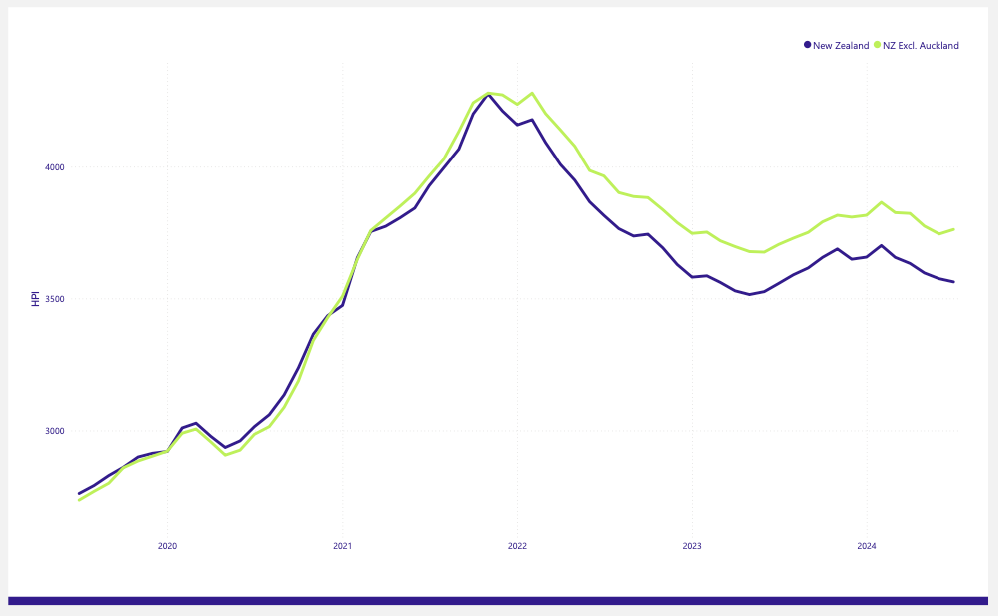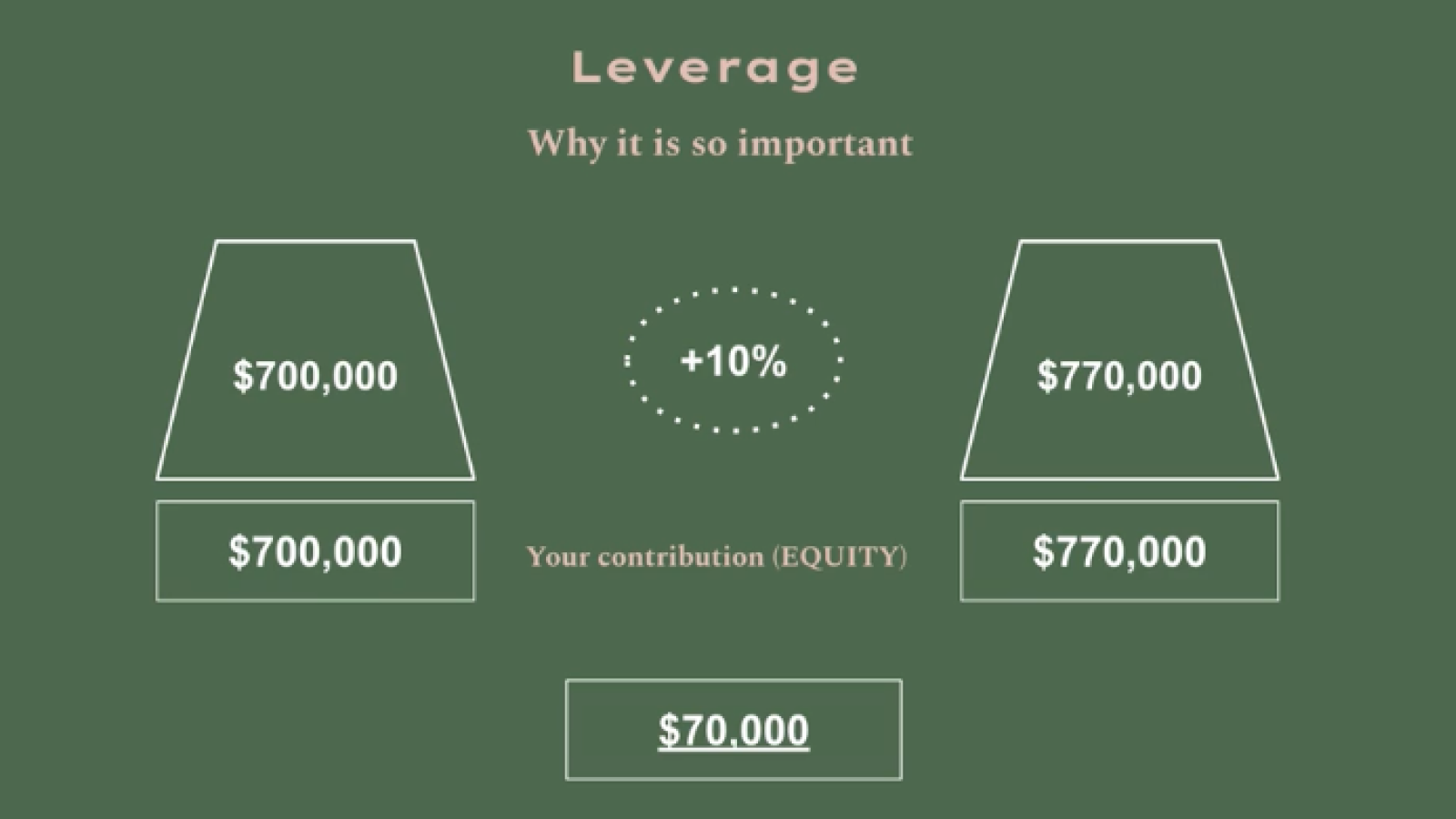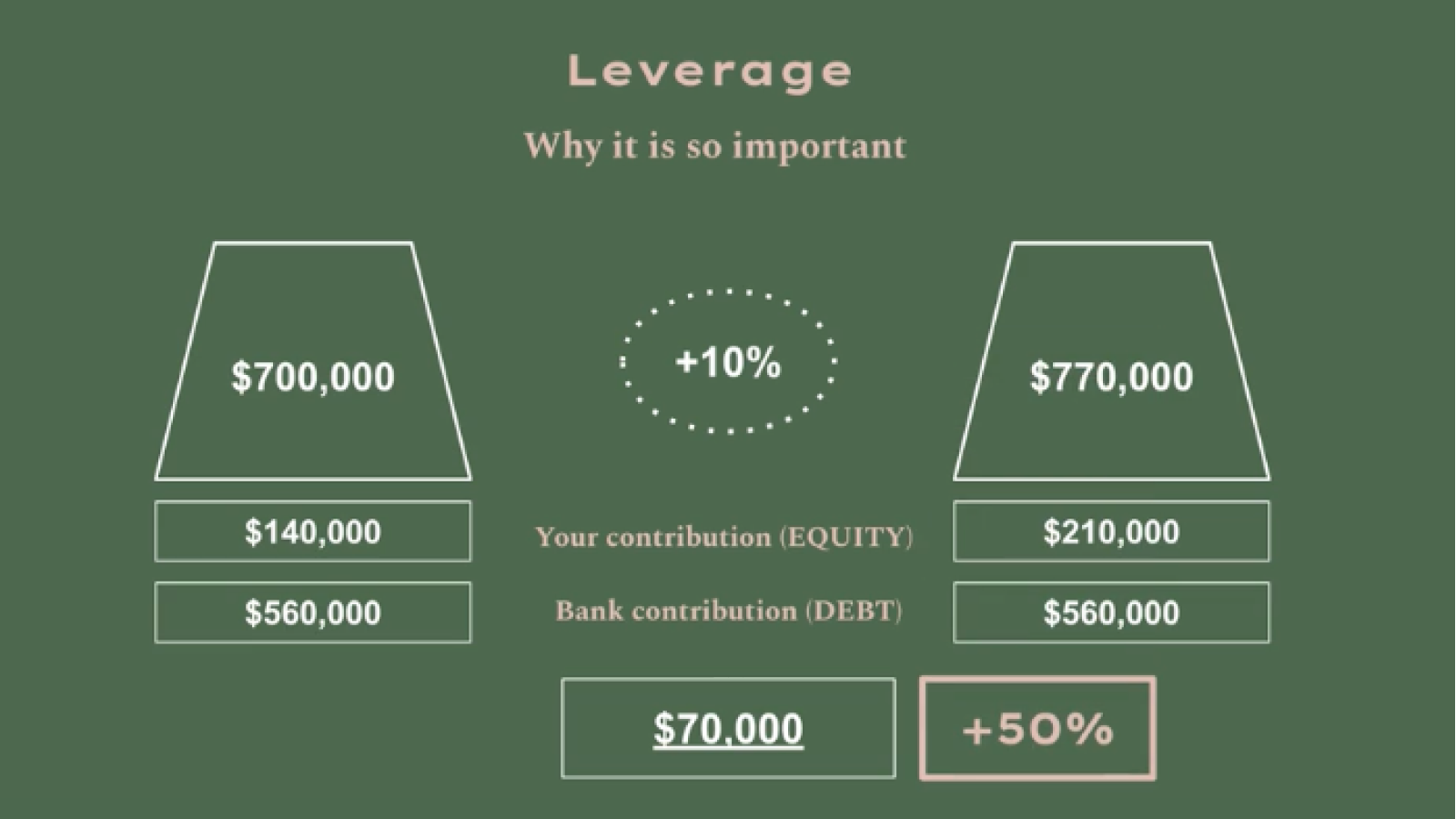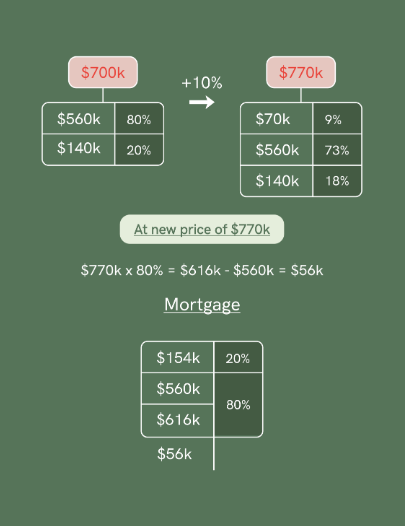Buying guide
Understanding leverage: a beginner’s guide
Don’t let jargon get in the way.

Positive historic returns are one of the perks of investing in property in NZ – if you look over the long term, property prices have gone up. However, this might not always be the case. Therefore, it’s good to be prepared for changes and understand that, like investing in any asset, there are risks when investing in property.
Just take a look at NZ property prices in 2022.
You can see from the chart below, that property prices fell 18% from their peak in Nov 2021 to mid-2023. Therefore, people who bought a house back in Nov 2021 will be feeling a bit of pain right now…more on why this is, later.
Image source: www.reinz.co.nz New Zealand House Price Index - June 2024
Now, there are lots of weird terms and jargon when it comes to finance… leverage is nothing more than one of those.
What does it mean? Leverage just means borrowing money to invest.
Leverage can be used in a number of ways. Businesses might use leverage to fund their growth, families might use leverage to purchase homes, and investors might use leverage to buy stocks.
When we talk about leverage in terms of buying a house, we're referring to a mortgage; a loan used to purchase a home.
Most of us could never save enough to pay for a house without a mortgage, so we have to use leverage. The great thing about leverage or a mortgage is that your returns are magnified.
What do we mean by that? Let’s look at some examples.
Example #1: No leverage
Let’s call this person, Abby.
Abby has been a super saver and managed to save the full amount for her house. She hasn’t saved just enough for a deposit, she has saved the entire amount – so she doesn't need to get a mortgage (or use any leverage) – lucky Abby! P.S. How TF did you do that Abby?!
She decides to use her $700,000 to buy a house. Her ‘equity’ in her house is $700,000. She has used no debt.
Fast forward 12 months, and property prices in her area have gone up by 10% – yay! Abby’s house is now worth $770,000 ($700,000 x 1.10). She has made $70,000 ($770,000 – $700,000) in one year!
So, that $70,000 on the original amount she invested ($700,000) means she has made a return of 10% by investing in property.
If property prices had fallen by -10%, her house would be worth $630,000 ($700,000 x 0.9) and she would have lost $70,000 in the value of her house. She would have a negative -10% from investing in property.
Example #2: With leverage + property prices RISE
Let’s call this person, Bianca. Bianca has also been saving her little bottom off and managed to save enough of a deposit to buy the house she wants. She has managed to use her KiwiSaver and savings to pull together $140,000 – amazing!
However, because the house she wants to buy is $700,000 (same price as Abby’s house), she needs to borrow the remaining amount of $560,000 from the bank. She uses $560,000 of leverage to purchase her first home.
Her ‘equity’ in the house is $140,000 (her deposit or her equity) and the ‘debt’ in the house is $560,000 (her mortgage).
Fast forward 12 months and, just like Abby, property prices in Bianca's area have also gone up by 10% – yay! Bianca's house is now worth $770,000 ($700,000 x 1.10).
However – now this is the key difference – because Bianca used leverage, she has actually made 50% return, not 10% like Abby. If you’re confused – don’t worry, I’m going to explain slowly (it took Soph a while to get this)!
The banks only ever want the $ that they lent you back, they don’t share in the house price movement. So, if the price of your house goes up, the bank doesn’t share in those gains.
With Bianca's example, since she put $140,000 into her house, and then once she pays back the bank the $560,000, she’s left with $140,000 (her deposit) + $70,000 (the gain in the house price) = 50% return!
In both examples, the houses went up the same amount, but the percentage return is much bigger for Bianca. Her return is 50%, compared to Abby’s 10%.
Why? Leverage. Moral of the story? Use leverage! It maximises your returns exponentially!
Example #3: With leverage + property prices FALL
Leverage can be super helpful in boosting your returns when property prices go up, but also when property prices go down.
We now have Cindy. Cindy is in the same situation as Bianca; she has been saving her little bottom off and managed to save a deposit of $140,000 to buy the house she wants.
She buys a house the same price as Abby and Bianca’s at $700,000. Because she only has a $140,000 deposit she needs to borrow the rest ($560,000) from the bank as a mortgage. She uses $560,000 of leverage to purchase her first home – same as Bianca.
Her ‘equity’ in the house is $140,000 (her deposit) and the ‘debt’ in the house is $560,000 (her mortgage) – same as Bianca.
Fast forward 12 months and there has been a recession, and property prices in Cindy's area have actually FALLEN by -10%. Cindy’s house is now worth $630,000 ($700,000 x 0.9).
However, remember, Cindy used leverage. So her return is actually NEGATIVE 50%, not negative 10%.
The house is now worth $630,000. It has lost $70,000 in value from its initial purchase price of $700,000. Because the bank will want its money back (the $560,000 of debt), Cindy has to bear the entire $70,000 loss.
People tend to forget this part of leverage. It can be amazing on the way up, but a killer on the way down.
Realised vs. unrealised leverage
I hope we haven’t scared you with the leverage examples! But this is why we always say ‘you need to invest for the long-haul’ or a decent amount of time (5+ years) when investing in risky assets e.g property and stocks.
The graph at the beginning of this module shows that property prices do go up – but over a long period of time. Not overnight!
Another thing to remember is that yes, Cindy’s property value might have decreased by -10%, but that is only an ‘on paper’ return. It isn’t until she actually gets a real estate agent, lists her property and sells it to a new owner that she would incur that -50% return due to leverage. This is what we call ‘unrealised losses’.
Unrealised losses or gains are the movement down and up of an asset.
Realised gains and losses are when you actually sell that asset, and get that money in your hand or bank account.
I always hear people say ‘Omg, I’ve lost so much on my stocks’ or ‘Omg, I’ve made so much money on my property’. These are unrealized gains and losses, so don’t get too excited until they’re ‘realised’. They’re only on paper, and essentially meaningless unless you actually follow up with some kind of action.
Share prices and property prices move up and down all the time. Try your best to not concern yourself with these!
The attractiveness of leverage
On a more positive note….leverage can be super helpful in other ways too.
In 2013, Loan-to-Value Ratios (LVRs) were introduced in NZ. These are limits for the banks to ensure they don’t give you a loan too high compared to the value of the property. In most situations and for most banks, the LVR is 80%. This means banks can lend you up to 80% of the value of the property. Technically there’s no LVR restriction for new builds. And for property investors (people with more than one home), the banks can only lend 65% of the value meaning they will need a 35% deposit.
If your house goes up in price, you can borrow more from the bank, as long as you’re within the 80% LVR limits. See diagram below.
If you do decide to loan extra money from the bank, you can use this to:
- Pay for renovations, like add an extra bathroom, which will increase the value of the property when you come to sell.
- Pay for the deposit of another property and start a property portfolio (remember, you may need a bigger deposit for your second home) .
- Use the money to subdivide, sell a piece of your property and add value that way.
Still a bit lost? We have a great podcast episode on Investing Beyond Property which explains leverage in more detail. Be aware, this is an old episode from July 2021 so there may be some information that is out-of-date, but the rest will be super relevant!
Financial Disclaimer
The Curve and The Curve Classroom course has been prepared solely for informational and educational purposes. Any information provided and serviced described in this website are intended to be of general nature and provide general information only. The opinions expressed by The Curve do not constitute investment advice and are not to be viewed as investment or financial advice. It does not take into account your investment needs or personal circumstances. Independent advice should be sought where appropriate. Should you require financial advice you should always speak to a Financial Adviser.
Author
Other articles you might like










